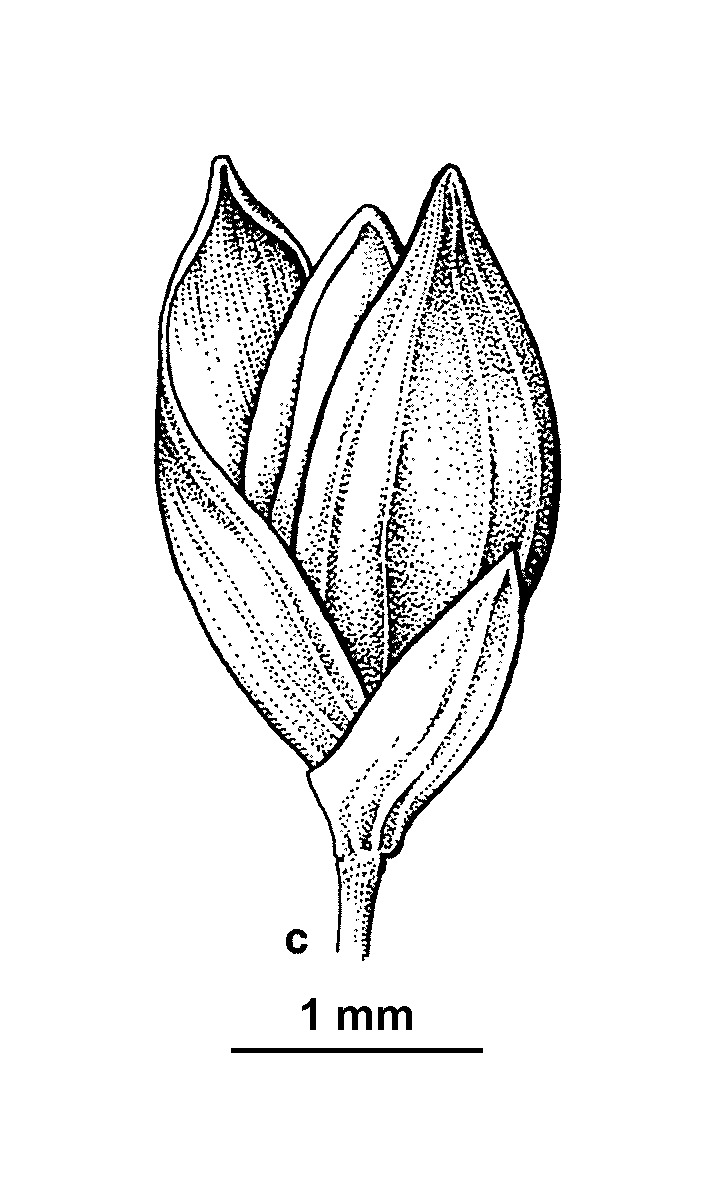Panicum bisulcatum
Thunb. Black-seed PanicStoloniferous annual, culms geniculate, ascending, to 90 cm high; nodes glabrous. Leaves glabrous; blade flat, to 25 long and 1.2 cm wide; ligule c. 0.5 mm long, rounded at apex, glabrous or shortly ciliate. Panicle fully exserted at maturity, 10–20 cm long, with branches remaining weakly semi-erect. Spikelets 2.2–2.7 mm long; lower glume 1–3-nerved, ovate, acute to slightly rounded at apex, flat, 1–1.3 mm long; upper glume 5-nerved, elliptic, as long as the spikelet; lemma of lower floret equal to upper glume; palea of lower floret absent; fertile lemma acute, 2–2.5 mm long, hard, shining, dorsally rounded; palea subequal to lemma, flat. Flowers Nov.–Apr.
VRiv, CVU, NIS, HNF. Also Qld, NSW. India, China, Japan. Known in Victoria from a few collections from the north-east (valleys of the Buffalo, King, upper Murray and Ovens Rivers). Previously regarded as probably a naturalised species, but an overview of its national distribution and origin in Queensland and New South Wales suggests the Victorian occurrences represent the southerly limit of a natural, native, occurrence.
Walsh, N.G. (1994). Poaceae. In: Walsh, N.G.; Entwisle, T.J., Flora of Victoria Vol. 2, Ferns and Allied Plants, Conifers and Monocotyledons, pp. 356–627. Inkata Press, Melbourne.
 Spinning
Spinning
